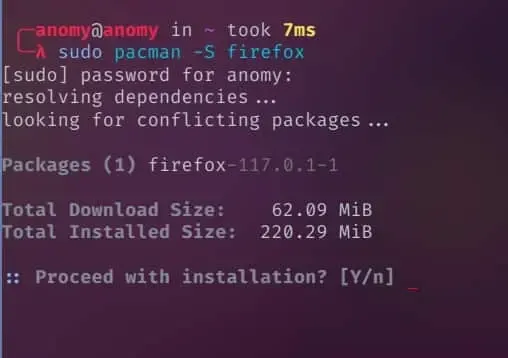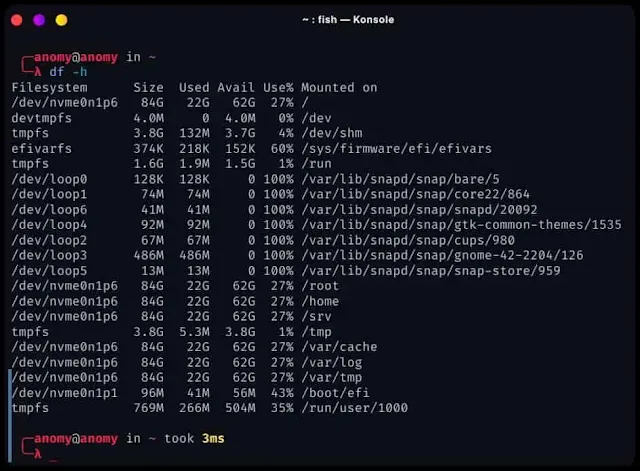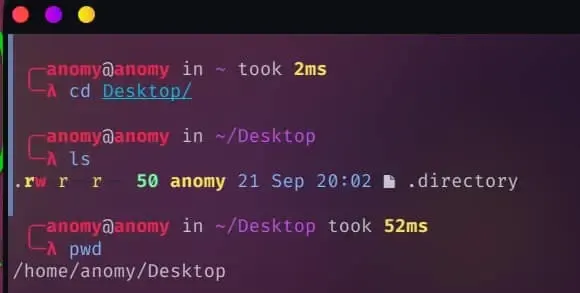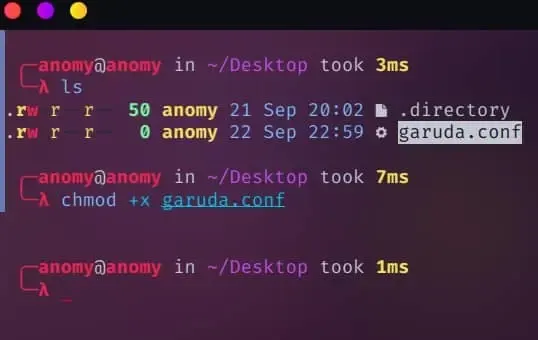Are you in search of a robust, user-friendly and cool Linux distribution that can used by both beginners and seasoned users alike? Look no further than Garuda Linux. In this blog post titled 'What is Garuda Linux', we will delve into the world of Garuda Linux, exploring its system requirements, comparing it to Ubuntu and Manjaro, learning essential commands, understanding the package manager, and mastering the Garuda Linux terminal. By the end of this article, you'll have the knowledge to kick-start your journey with Garuda Linux confidently.
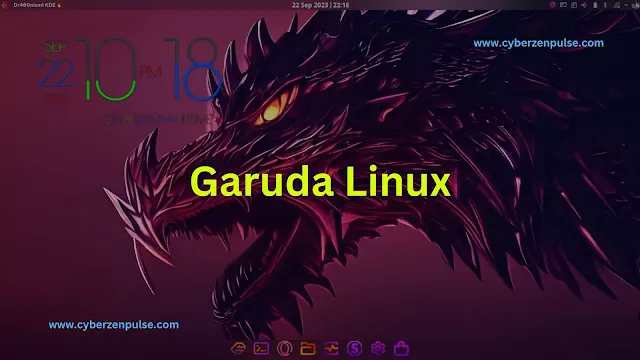 |
| garuda dragonized KDE desktop |
What is Garuda Linux?
Garuda Linux is a cutting-edge and user-friendly Linux distribution built on the solid foundation of Arch Linux. It aims to provide a hassle-free and highly customizable Linux experience for users of all skill levels. The name "Garuda" is derived from Hindu mythology, where Garuda is a mythical bird-like creature known for its speed and power, symbolizing the project's aim to deliver a swift and robust Linux environment.
Origins and Philosophy
Garuda Linux was officially released in 2020 by its creator, an engineer known as "Shrinivas Vishnu Kumbhar." It has quickly gained popularity within the Linux community due to its unique approach to the Arch Linux base and a strong focus on user experience.
The philosophy of Garuda Linux can be summarized in a few key principles:
User-Centric: Garuda prioritizes user convenience and offers an extensive range of tools to make the Linux experience as accessible as possible.
Cutting-Edge Technology: The distribution includes the latest software packages, kernel updates, and innovative features to stay ahead of the curve.
Customization: Garuda encourages users to tailor their systems to their preferences, offering various desktop environments and themes.
Garuda Linux System Requirements
Before we start our Garuda Linux journey, it's essential to ensure that your system meets the necessary requirements. Unlike some resource-hungry operating systems, Garuda Linux is relatively lightweight, making it accessible to a broader audience. Here are the minimum system requirements:
|
Processor |
64-bit
processor with 2 cores. |
|
RAM |
2GB of RAM or
more for smooth performance. |
|
Storage |
Storage:
Minimum of 20 GB of disk space. |
|
Graphics |
A GPU with
support for OpenGL 3.3 or higher. |
|
Display |
A screen with
a resolution of 1366x768 or higher. |
Meeting these requirements will ensure that Garuda Linux runs smoothly on your system.
Read Also:- Detailed Introduction of Garuda Linux
Navigating Garuda Linux - Essential Commands and Package Management
Let's dive into the practical aspects of using this powerful distribution. We'll explore essential commands and understand how the package manager works.
 |
| Garuda Linux's Terminal aka Konsole |
Garuda Linux Commands:
Update the System:
open the terminal and run:
sudo pacman -SyuThis command will update all installed packages.
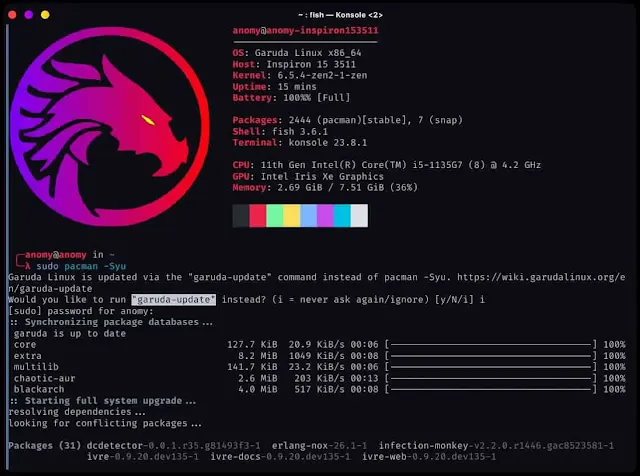 |
| You can also use 'garuda-update' to update packages |
Install Software:
Use Pacman to install the software. For example, to install Firefox, run:
sudo pacman -S firefoxRemove Software:
To remove software, use the following command, replacing "package-name" with the software you want to uninstall:
sudo pacman -R package-name |
| For example, to uninstall Firefox we use the 'sudo pacman -R firefox' command |
Search for Packages:
To search for available packages, use:
pacman -Ss search-termreplace “search-term” with package name
Check Disk Usage:
To check disk usage, run:
df -hManage Services:
To start, stop, or restart services, use the systemctl command.
For Example: to reboot the system
systemctl rebootGaruda Linux Package Manager:
Garuda Linux primarily uses Pacman for package management. Pacman is a command-line utility that allows you to install, update, and manage software packages. Here are some common Pacman commands:
pacman -S package-nameInstalls a package.
pacman -R package-nameRemoves a package.
pacman -SyuUpdates all installed packages.
garuda updateThis will also update your system
pacman -Ss search-termSearches for packages.
pacman -QeLists explicitly installed packages.
Mastering the Garuda Linux Terminal
The terminal is where the true power and flexibility of Linux distributions like Garuda Linux shine. Here are some essential terminal tips to help you become proficient:
Navigation:
Use cd to change directories.
ls command lists directories and files in the current directory.
pwd command displays the current working directory.
File Operations:
cp copies files or directories.
mv moves or renames files and directories.
rm removes files and directories.
touch create a file (txt, config etc.)
mkdir for creating a directory or folder
Permissions:
Use chmod to change file permissions.
For example, if there is a file named “garuda.conf” then we use the following command to give or change the permission.
chmod +x garuda.confThis command gives the root permission to garuda.conf file
chown changes file ownership.
Pipes and Redirection:
Utilize | for piping output between commands.
Use > and < for input and output redirection.
SSH:
Use ssh to connect securely to remote servers.
Here is How to receive or send files using SSH on Linux
How to Install Packages in Garuda Linux
Now that you're familiar with essential terminal commands and package management, let's walk through the process of installing packages in Garuda Linux.
Using Pacman:
Open the terminal.
To install a package, use the command
sudo pacman -S package-nameReplace "package-name" with the name of the package you want to install.
Confirm the installation when prompted.
AUR (Arch User Repository):
Garuda Linux supports AUR, which allows you to install software not available in the official repositories.
To install AUR packages, you can use an AUR helper like yay. First, install yay using Pacman:
sudo pacman -S yayThen, use Yay to search for and install AUR packages.
Software Center:
Garuda Linux also offers a graphical software centre for a user-friendly package installation experience.
Open the Garuda Welcome application and navigate to the "Add or remove software" section.
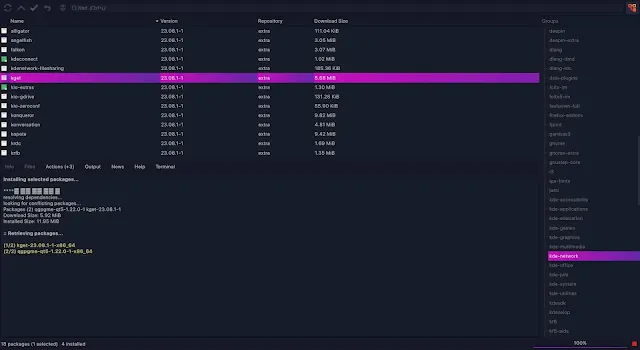 |
| select a package right click on the selection and click on install, then move your cursor to the Windows title and click on Done (right icon) |
Browse available software and click "Install" to add packages to your system.
With these methods, you can effortlessly install packages in Garuda Linux, whether they are from official repositories or the AUR.
Garuda Linux vs. Ubuntu - Making an Informed Choice
Garuda Linux is often compared to other popular Linux distributions like Ubuntu. Let's inspect how they differ:
Garuda Linux:
Arch-Based: Garuda Linux is built upon the Arch Linux foundation, known for its rolling release model and bleeding-edge software.
Aesthetics: Garuda Linux places a strong emphasis on aesthetics, featuring visually appealing themes and a beautiful desktop environment.
Performance: Garuda Linux is optimized for performance, making it an excellent choice for gamers and power users.
Package Manager: It uses Pacman, a powerful package manager known for its speed and efficiency.
Ubuntu:
Debian-Based: Ubuntu is based on Debian and follows a more stable release model, focusing on reliability.
User-Friendly: Ubuntu is renowned for its user-friendliness and ease of installation, making it a top choice for beginners.
Variants: Ubuntu offers different flavours, each with its desktop environment, catering to diverse user preferences.
Package Manager: Ubuntu uses APT (Advanced Package Tool) for package management, known for its vast software repository.
Your choice between Garuda Linux and Ubuntu should align with your priorities, whether it's performance, aesthetics, or ease of use.
Garuda Linux vs. Manjaro - A Battle of Arch-Based Distros
Garuda Linux and Manjaro both hail from the Arch Linux family, but they have distinct characteristics:
Garuda Linux:
Out-of-the-Box Experience: Garuda Linux provides a polished, out-of-the-box experience with a focus on aesthetics and pre-installed software.
Performance Tweaks: It comes with performance-enhancing tweaks and optimizations, making it ideal for users seeking top-tier performance.
Rolling Release: Garuda Linux follows a rolling release model, ensuring you always have the latest software updates.
Manjaro:
User-Friendly: Manjaro strives for user-friendliness and accessibility, making it an excellent choice for those new to Arch-based distributions.
Stability: Manjaro balances the bleeding-edge Arch base with a focus on stability, thanks to its in-house testing process.
Variants: Manjaro offers multiple desktop environments, allowing users to tailor their experience to their liking.
The choice between Garuda Linux and Manjaro largely depends on your preference for performance optimizations and out-of-the-box aesthetics or a more user-friendly and stable experience.
Frequently Asked Questions (FAQs) About Garuda Linux
Is Garuda Linux an Indian Operating System?
It is founded by en. Shrinivas Vishnu Kumbhar belongs to India, but Garuda Linux is not exclusively an Indian operating system. It is an Arch Linux-based distribution maintained (developed) by a global community of developers and enthusiasts.
What is Garuda Linux Based On?
Garuda Linux is based on the Arch Linux distribution, known for its rolling release model and emphasis on simplicity and customization. This foundation allows Garuda Linux to provide the latest software updates and a high degree of flexibility.
What is Garuda Linux Used For?
Garuda Linux is a versatile operating system used for a wide range of purposes, including:
- General desktop computing
- Gaming (thanks to its gaming-focused editions)
- Software development
- System Administration
- Multimedia production
- Education
- Server management (with appropriate configurations)
Its flexibility and extensive software repositories make it suitable for various use cases.
Which Garuda Linux Edition is Best for Me?
The best Garuda Linux edition for you depends on your specific needs and preferences. Garuda Linux offers several editions, each tailored to different use cases and desktop environments. Explore the available editions on the official Garuda Linux website to find the one that suits you best.
How Do I Update Garuda Linux?
To update Garuda Linux, open the terminal and run the following command:
sudo pacman -SyuThis command will synchronize package databases and upgrade all installed packages to their latest versions. Regularly updating your system is crucial for security and accessing new features.
How Do I Download Garuda Linux?
You can download Garuda Linux from the official Garuda Linux website. Visit garudalinux.org and select the edition that aligns with your needs and preferences. Then, follow the provided download instructions to get the ISO file for installation.
Who Created Garuda Linux?
it is founded by Shrinivas Vishnu Kumbhar an Indian engineer. Garuda Linux is developed by a community of open-source enthusiasts and contributors from around the world. It is not attributed to a single individual or organization but represents the collaborative efforts of the Linux community to create a user-friendly, performance-oriented Linux distribution.
Conclusion
Garuda Linux is a versatile and visually impressive Linux distribution that caters to a wide range of users. In this beginner's guide, we've explored its system requirements, compared it to Ubuntu and Manjaro, delved into essential commands, explained the package manager, and provided tips for mastering the terminal. By following the instructions in this guide, you're well on your way to harnessing the power of Garuda Linux for your computing needs.
So, why wait? Download Garuda Linux, follow this guide, and embark on your exciting Linux journey today!
Tell us how much you like our efforts or how this blog helps you by commenting.
